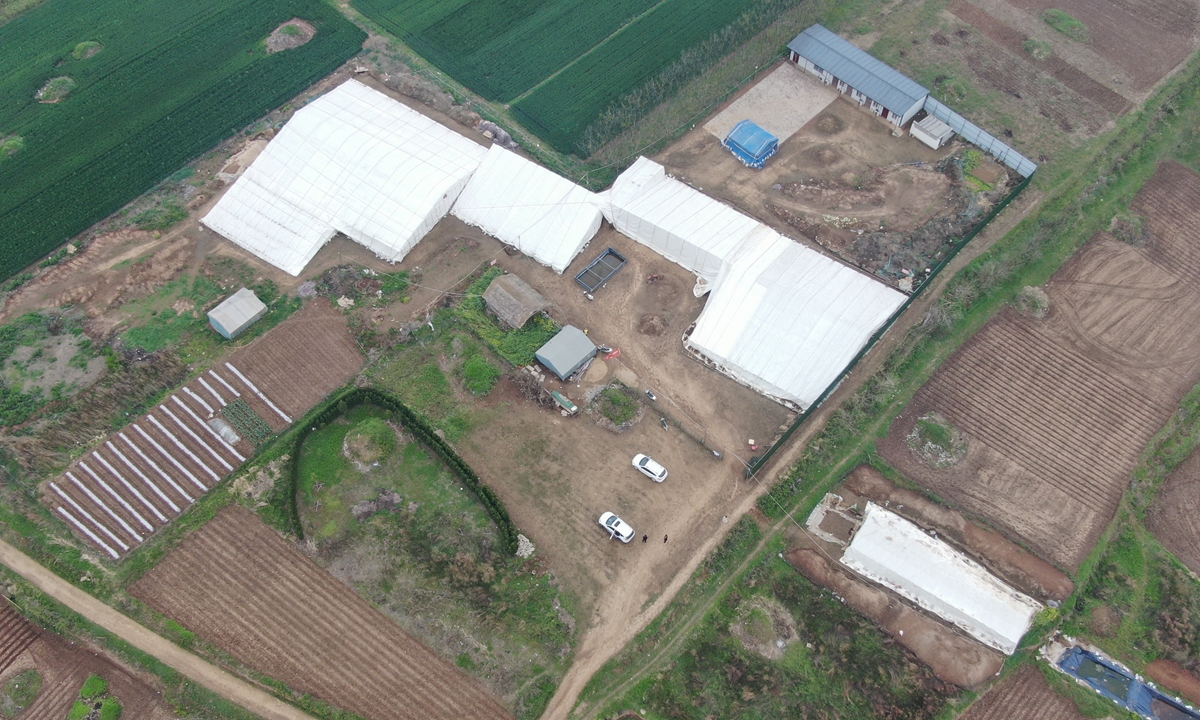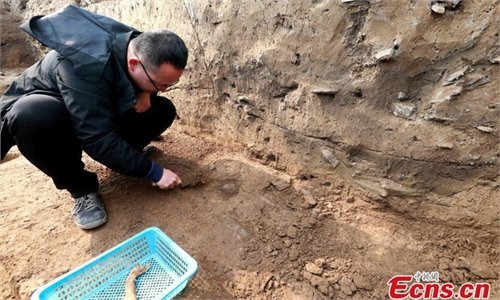ARTS / ART
Neolithic archeological site named one of Henan Province's five most significant discoveries

The Huangshan site Photo: VCG
The Huangshan Archeological Site in Nanyang, Central China's Henan Province, from which cultural relics spanning 3,000 years of the Neolithic period including the Yangshao culture have been unearthed, was selected as one of the five most significant archeological discoveries in Henan Province on Monday.
So far, Chinese archeologists have excavated around 2,400 square meters of the 300,000-square-meter site and discovered cultural relics from various times throughout the Neolithic period such as house sites, workshops and tombs of the Yangshao culture, a Neolithic culture that existed extensively along the Yellow River in China from around 5,000 BC to 3,000 BC.
Ma Juncai, head of the excavation team, told media that relics and ruins from three Neolithic cultures - the early Yangshao culture, Qujialing culture (3,300 BC to 2,600 BC) and Shijiahe culture (3,000 BC to 1,900 BC) - were found in different earth layers at the site.
The discoveries from the early Yangshao period to Qujialing period were mainly composed of multi-story houses and tombs containing extremely rich and complex relics.
Archeologists discovered workshops, houses, tombs and ritual pits. The ruins of docks and sections of artificial waterways from the three periods were also found.
The residential buildings from the Yangshao culture are some of the best preserved prehistoric buildings to date in China. With high walls, complete internal facilities and a large number of relics have been found on site, giving further insight into the production of jade and stone tools and people's lives at the time.
The tombs of the Qujialing culture are divided into distinct grades. Most of the skeletons in the tombs were well preserved and buried with their limbs placed straight.
Ma noted that looking at funeral objects such as bone and jade tools, researchers were able to confirm that this site was one of the highest-grade clan cemeteries of the Qujialing culture and most likely belonged to a clan that crafted jade tools.
The docks and the artificial waterways are also important discoveries. Wharfs from the Yangshao and Qujialing cultures were the first prehistoric ones discovered in Central China. Wharfs, natural rivers and man-made rivers constitute a waterway transportation system that reflects ancient people's ability in utilizing water resources.
A total of 72 stone, 20 bone and 64 pottery fragments were unearthed alongside nearly 300 pieces of pottery. Researchers also collected 30 specimens of human bone and about 400 specimens of animals and plants.
The Huangshan Archeological Site reflects the complexity of society and the integration of cultural exchanges between the northern and southern parts of China at that time. A major discovery in Chinese Neolithic archaeology, it is a key site for discussing the origin and development of civilization and culture on the Jianghan Plains of the Nanyang Basin, and also holds significance for the study of Chinese civilization.
Xu Yitao, an archeologist based in Beijing specializing in ancient architecture, told the Global Times that archeologists use a method of unearthing sites layer by layer when excavating ruins like the Huangshan site that cross various time periods.
"When they complete unearthing one layer, they stop to record the situation by drawing and photographing the site and then start excavating the next layer. Each layer has information from a particular age," Xu said.
Some layers that have not been disturbed by modern human activities can reflect different aspects of the time, including the environment and human living habits.


